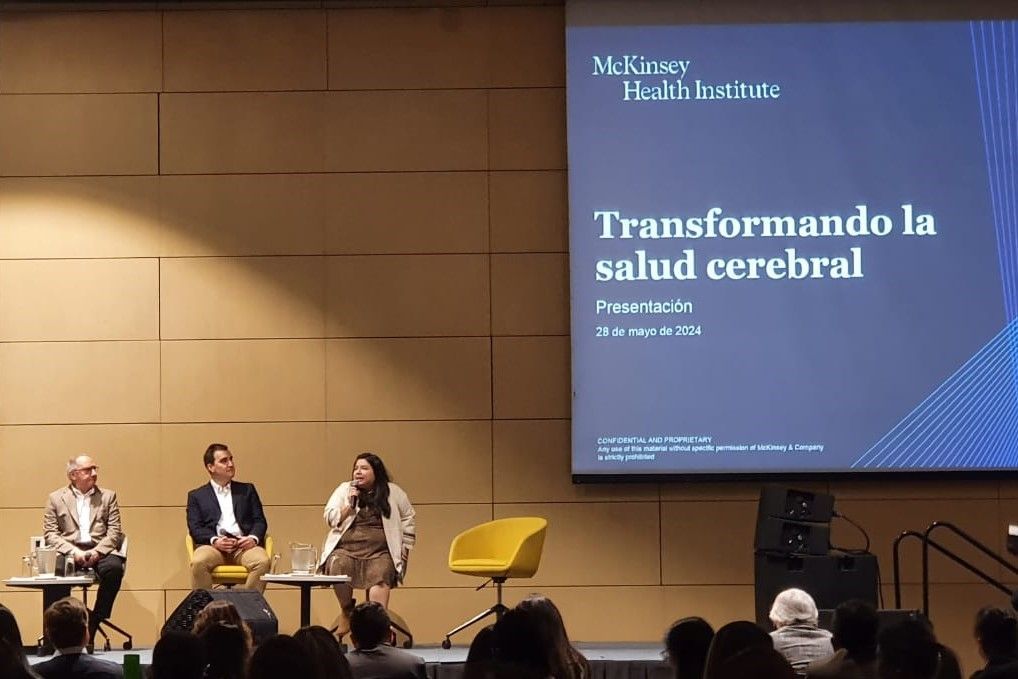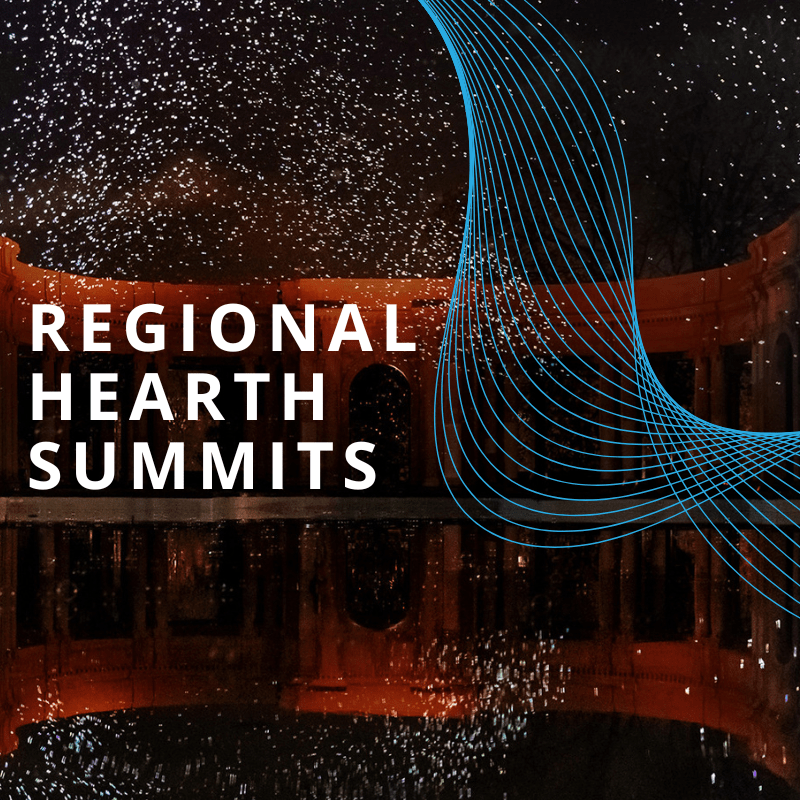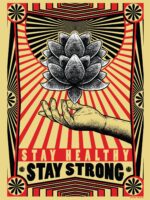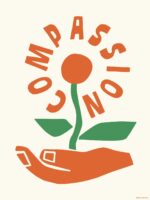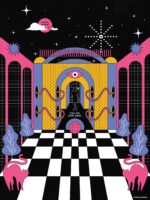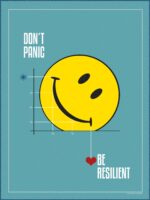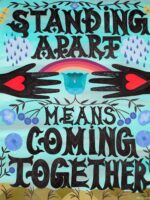
Business as a Force for Good Business as a Force for Good
Sustainable Business x Regional Hearth Summits
WHEN WELLBEING IS BUSINESS AS USUAL WHEN WELLBEING IS BUSINESS AS USUAL
“How you climb a mountain is more important than reaching the top.”
Yvon Chouinard
How to Build a Wellbeing Economy
Session From Hearth Summit Athens
In its holistic exploration of the future of wellbeing cities, Hearth Summit Athens took a deep dive into the concept of impact economies: how can we transform systems to truly value wellbeing? Watch this debate between Lorenzo Fiaromonti, former Italian Minister of Education and Founding Director, University of Surrey Institute for Sustainability, and Conchita Galdon, Vice Dean, Instituto de Empressa.
How Organizational Wellbeing Inspires Welldoing
LEARNINGS FROM THE WELLBEING PROJECT’S ORGANIZATIONAL EXPLORATORY PROGRAM
The Wellbeing Project, along with eight organizations from around the world, the Tavistock Institute, and the Center for Healthy Minds spent five years researching the value of organizational wellbeing and how to foster it. They learned that any organization, public or private, can benefit from promoting organizational wellbeing: it improves employee performance, which translates into improved organizational performance.
Read People & Culture Elder Ricardo Paz’s summary of the research findings, which he presented at Hearth Summit Bogotá, in English and Spanish.
Understanding the Mental Health of Social Entrepreneurs in Latin America
Research from The Wellbeing Project and the Interamerican Development Bank
In Bogotá, Juan Pablo López Gross from the Interamerican Development Bank Lab (BID Lab) presented the findings of new research conducted with The Wellbeing Project on the mental health of high-impact social entrepreneurs in Latin America, ultimately sharing the business case for wellbeing: if the entrepreneurs are doing well, the ventures will do better. Watch the session (in Spanish) and download the research.
Employee Mental Health: From Burnout to Holistic Wellbeing
Research from McKinsey Health Institute
The findings of an international survey by McKinsey Health Institute were shared with participants in Bogotá, which dive deep into mapping and understanding various factors that influence employee wellbeing, offering employers insight into how to best support their employees’ mental health.
Companies That Impact the Wellbeing of Communities | Empresas que Impactan el Bienestar de las Comunidades
Session From Hearth Summit BOGOTÁ
In Bogotá, Gaby Arenas de Meneses, director of the TAAP Foundation, Ashoka Fellow and Co-chair of Catalyst 2030 Latam, invites us to explore how social wellbeing influences our individual wellbeing, and what role companies can play in improving living conditions in their communities. Watch the session (in Spanish).
In Brussels, Isabelle Grosmaitre, founder of Goodness & Co., shared her recommendations on how businesses can transform themselves to make a positive impact; place diversity, equity, and inclusion (DEI) at the heart of their work; and foster of a culture of agency to empower all collaborators towards success and wellbeing.
In Brussels, Eleanor Allen explained B Lab’s ethos for making sustainable business the norm — explaining the B Corporation certification process, its benchmark indicators for positive social and environmental impact as well as employee wellbeing — inspiring changemakers to reflect on how profit and purpose can be one in the same.
In Brussels, Hugues Karemera, Deputy COO of Euroclear Bank, and Michel Mersch, CEO of Nestlé Belgium and Luxembourg, explained their companies’ successful approaches to organizational wellbeing, including the feedback mechanisms used to understand employees’ satisfaction with policies and determine new paths for action.
Sustainable Work: From Burnout to Excellence — Engaging Today’s Employees
Session From Hearth Summit BOGOTÁ
In Bogotá, Eleanor Allen, CEO of Catapult for Change, explores how to move from burnout to work-life balance and integration and how this impacts worker wellbeing and retention in companies. Watch the session (in English).
Meet Five B Corps That Put People and the Planet First
At Brussels, Eleanor Allen highlighted five companies around the world with some of the highest scores in B Lab’s social and environmental benchmark. Read about the following B Corporations and why their models for employee wellbeing, sustainable production and consumption, and positive social and environmental impact can inspire other entrepreneurs:
- BioCarbon Partners, Zambia
- Caravela Coffee, Colombia
- Namaste Solar, USA
- Seetec Business Technology Center, United Kingdom and Ireland
- Tridos Bank, The Netherlands
Paving the Path to an Inclusive, Home-Grown Dairy Market in Senegal
The STORY OF LA LAITERIE DU BERGER
In Dakar-Thiès, changemakers learned about La Laiterie Du Berger, the very first B Corporation-certified company in Senegal. Since 2005, the laiterie has been collecting milk from more than 1,400 smallholder dairy farmers in Senegal to collectively sell them under a single brand, Dolima. By integrating them into the mainstream dairy market together, it has been able to revolutionize the Senegalese dairy market, which, in 2005, imported 90% of its dairy products as powdered milk. As a result of the company’s mobilization and collective action, more than 3,000 families have benefitted from a steady income, improving their business ventures, quality of life, and the wellbeing of their community. Furthermore, the support of these smallholder farmers has helped preserve traditional veterinary and agricultural practices as a cornerstone of the Senegalese economy.
Hear from director general of La Laiterie du Berger, Bagoré Bathily, in our Voices of Wellbeing series.
EXPLORE WELLBEING AND BUSINESS FURTHER EXPLORE WELLBEING AND BUSINESS FURTHER
Dive Into Research, News, and Stories on Sustainable Business
Wellbeing Wisdom From India: An Interview with Dr. Mala Kapadia on Intergenerational Trauma and Ecological Belonging Wellbeing Wisdom From India: An Interview with Dr. Mala Kapadia on Intergenerational Trauma and Ecological Belonging
A CONVERSATION WITH:
Dr. Mala Kapadia
Director, Anaadi Centre for Indigenous Knowledge Systems, Anaadi Foundation
🌍 Tamil Nadu, India
What can traditional Indian Knowledge Systems teach the world about wellbeing?
Dr. Mala Kapadia, director of the Anaadi Centre for Indigenous Knowledge Systems at the Anaadi Foundation, shares knowledge and practices from the Indian sciences of Ayurveda, Yoga, Aesthetics, and Poetry, around Ecological Belonging and intergenerational trauma.
Watch the full video for her teachings, or read the highlights below.
“In India, I realized that the ideal could be that India becomes the voice for humanity — where you see the vibrancy of people practicing Ayurveda, practicing Yoga, living their civilizational, cultural values, which is slowly happening post-pandemic. It is slowly happening.”
WHAT ARE THE SCIENCES OF AYURVEDA AND YOGA AND HOW DO THEY RELATE TO WELLBEING?
Ayurveda, as they describe it, is a manual of life skills. It’s not just a medicinal system. It’s Veda- knowledge of ayu. Ayu is life. Ayurveda actually describes Life, and the beauty of Ayurveda is that it is for everyone. It’s not only for Indian people. It’s not for the people from a certain region, but the Sages talked about humanity at large. They say that our life has purpose and meaningfulness and to achieve that, there are paths, right?
The path begins with dharma, a Sanskrit word coming from the etymology Dharayati Iti Dharma. Meaning, anything that sustains you, holds you together, is dharma. I feel it’s a beautiful way to look at our life. It’s only psychology that has taken more than 200 years to reach positive psychology where Martin Seligman and others are talking about meaningfulness. And here there are sages many, many millennia ago who wrote about how life has to be meaningful for us to be healthy and happy. They describe life as Hita, beneficial to self and others, because they always saw life as a continuum: we and the Cosmos, we and everyone else, are interconnected. And only when we are leading a life which is interconnected and integral, can we be happy. And happiness is, not the pursuit of happiness that we understand today in a modern language, but it’s all about the State of Being. With the wellbeing crises that we see today, I realize that Ayurveda beautifully connects the wellbeing of the planet and wellbeing of an individual.
With the wellbeing crises that we see today, I realize that Ayurveda beautifully connects the wellbeing of the planet and wellbeing of an individual.
WHAT DO AYURVEDA, YOGA AND OTHER INDIAN SCIENCES TELL US ABOUT NEUROSCIENCE, EMOTIONS, AND HEALING?
What Yoga, Ayurveda, and the science of Aesthetics are talking about is being rediscovered and not just rediscovered, it’s being validated scientifically by some modern theorists. Today a lot of scientists talk of neurotransmitters, et cetera, but they look at only the brain. If you revisit our biology or anatomy from a Yogic perspective, our physical body that can be seen and studied or x-rayed is one reality, but we are also energy sheets.
So we are still stuck learning biology and anatomy from a Newtonian or Cartesian perspective dividing body and mind. But what is mind? People are still struggling to understand it. While in Ayurveda and Yoga, the body-mind continuum is very beautifully described. We have seven chakras, the major chakras, and many minor chakras. And I’m glad today chakra, like mantra and dharma, is a word in Western vocabulary as well. These are what Georgetown University neuroscientist Candace Pert talks about nodal points of neurotransmitters. The neurotransmitters on those nodal points of the chakras are either blocked or they are open. So when they are blocked, naturally the energy flow is restricted and therefore the energy or Prana does not reach those organs which are connected with those nodal points. She was one of the, I think, first Western scientists to say that body and mind is a continuum.
HOW CAN THIS KNOWLEDGE HELP US WITH HEALING FROM TRAUMA?
So when I go back to Yoga and Ayurveda as ancient sciences as I said, “If we all are integrated, we all are connected, then my energy and the world’s energy is somewhere merging together, right?” Energy, we all know, cannot be created or destroyed. It needs to be transformed. So when we look at trauma, trauma is an energy block as I see it personally. If it’s a blocked energy, then which chakra is it impacting? Is it impacting your security? Is it impacting your relationships? Is it about your power or victimhood? Is it about your heart experiencing gratitude or is it about your heart experiencing a closed xenophobic existence where you switch on to a survivalistic mode? This is what scientifically people talk about trauma and the response to trauma as fight, flight, or freeze. But that fight, flight, freeze is not just limited to the brain. It travels all over the body. So, if my mind is in every cell of my body, then my trauma response is also coming from every cell in my body. It’s not only a cognitive skill.
This is where Yoga and Ayurveda come into play because they have a lot of practices which can help you dissolve these traumatic emotional imprints without wanting to bring them up to the brain, which is not able to cope.
And they can be dissolved with a lot of Ayurvedic treatments, Ayurvedic lifestyle guidance meditations and Yogic lifestyle. And when I say Yoga, it’s not just exercise or breathing exercises or physical postures. Patanjali’s Yoga Sutras, one of the oldest texts of Yoga talks of Yama and Niyama, which are the behavioural codes at the individual level and collective level. So unless we practice them, doing breathing exercises and doing postures will not give us results.
DO INDIAN SCIENCES TELL US HOW INTERGENERATIONAL TRAUMA AND ECOLOGICAL BELONGING ARE CONNECTED?
In all ancient indigenous cultures, I found one thing common is, apart from being connected with nature, they’re also connected with their ancestors. Our history, our ancestors, are living within us, not just genetically, but psychologically and spiritually. Ancestor healing is a major ritual in most of the indigenous cultures, including India. In India, we have birth charts. The moment you are born, depending on the time of the birth, a birth chart for every child is created. Most of the birth charts have a problem with ancestors. It’s called Pitru Dosha. Pitru are ancestors and Dosha is some problem. Now, obviously, we really don’t know what our ancestors were going through, right? Beyond a certain generation, we don’t even know our ancestors. And we don’t even know what their life was. We don’t even know what trauma they went through. But whatever their trauma, we have inherited it and the trauma of Mother Earth. That’s also an ancestral trauma. There are a lot of rituals connected with the five elements – the element of sky or ether or Akaash; the element of air or Vayu; Fire; Water; and Earth – because many ancient indigenous cultures believe that the entire universe and our body all are made up of these five elements.
WHAT IS AN EXAMPLE OF AN INDIAN PRACTICE ONE CAN DO TO WORK ON INDIVIDUAL AND COLLECTIVE HEALING?
One ritual we have is ending all the prayers with saying, “Shanti hi, Shanti hi, Shanti hi.” Shanti means peace. Why do all prayers end with saying peace three times? Just one time could have been enough. The three “peace” is invoking peace at three levels: one, individual, me and myself; two, collective, which is the community around me, society, Nature around me, my nation; and three, the global level and Universal level.
Today, when there are wars happening, when there is so much destruction happening, when there is so much human suffering, working on peace and giving it priority is very important. I realized that, unfortunately, most of the Western researchers define peace as an absence of war or conflict. Peace is not seen as a positive construct in itself, which is there in India. In Indian literature, in Indian philosophy, peace is a positive construct. Health is a positive construct. Health is not as opposed to disease and peace is not opposed to war or conflict. So, if peace is a construct in itself, how do you arrive at it? How do you actually start experiencing peace from within? And chanting mantras, chanting simple Om, is one way.
Why do all prayers end with saying peace three times? The three “peace” is invoking peace at three levels: one, individual; two, collective ; and three, the global level and universal level.
YOU’RE DESCRIBING HOW MODERN SCIENCES ARE “VALIDATING” TRADITIONAL SCIENCES. DOES THIS MEAN THEY ARE THE SAME?
We talk of ancient or indigenous wisdom at one level and modern at another. And a lot of people have this misconception that ancient is outdated and modern is more scientific, or modern is the complete know-how. Unfortunately – or fortunately – we realize that what is ancient is being rediscovered by many modern theorists. So we as humanity, we just have to take a U-turn and go back to our own cultural roots, civilizational roots. I realize that most of the indigenous cultures, they were connected and rooted in nNature. I’ve been to Hawai’i. I’ve met some of the Kahunas, the wisdom holders. And one of the Kahuna, I still remember, she held my hands and she said, “You are one of us.” I realized that she felt that and I felt that because of the Mother Earth. We could have lived in different lifetimes. We could have lived in different geographical locations, but ultimately, it’s all One.
I’ve been to Hawai’i. I’ve met some of the kahunas, the wisdom holders. And one of the Kahuna, I still remember, she held my hands and she said, “You are one of us.” I realized that she felt that and I felt that because of the Mother Earth.
IN FACING OUR 21ST CENTURY CHALLENGES, WHAT ROLE DO YOU THINK SPIRITUALITY AND THIS ANCIENT WISDOM CAN PLAY IN THE SOLUTIONS?
The industrial revolution has uprooted people from nature. Nature has become a resource to be used and exploited. People became a resource that needs to be used and exploited and we didn’t realize that we ourselves became this resource. This trauma needs to be addressed because today, corporates have to wake up to the spiritual aspect, which is not a philosophical aspect, it is a practical aspect. Most of the United Nations Sustainable Development Goals are far away from being met.
When we are spending so much money on sustainability goals, climate change, et cetera, what we don’t realize is, we just need to bring back that foundation of spirituality, Dharma, in everything we do. And the moment that foundation comes back, everything will fall into place. Right now, we have lost the bigger picture. We are all struggling with pieces of puzzles, trying to fit them here and there. But spirituality is like a bigger picture, and without looking at that bigger picture, we are not able to fit in those pieces of the puzzles.
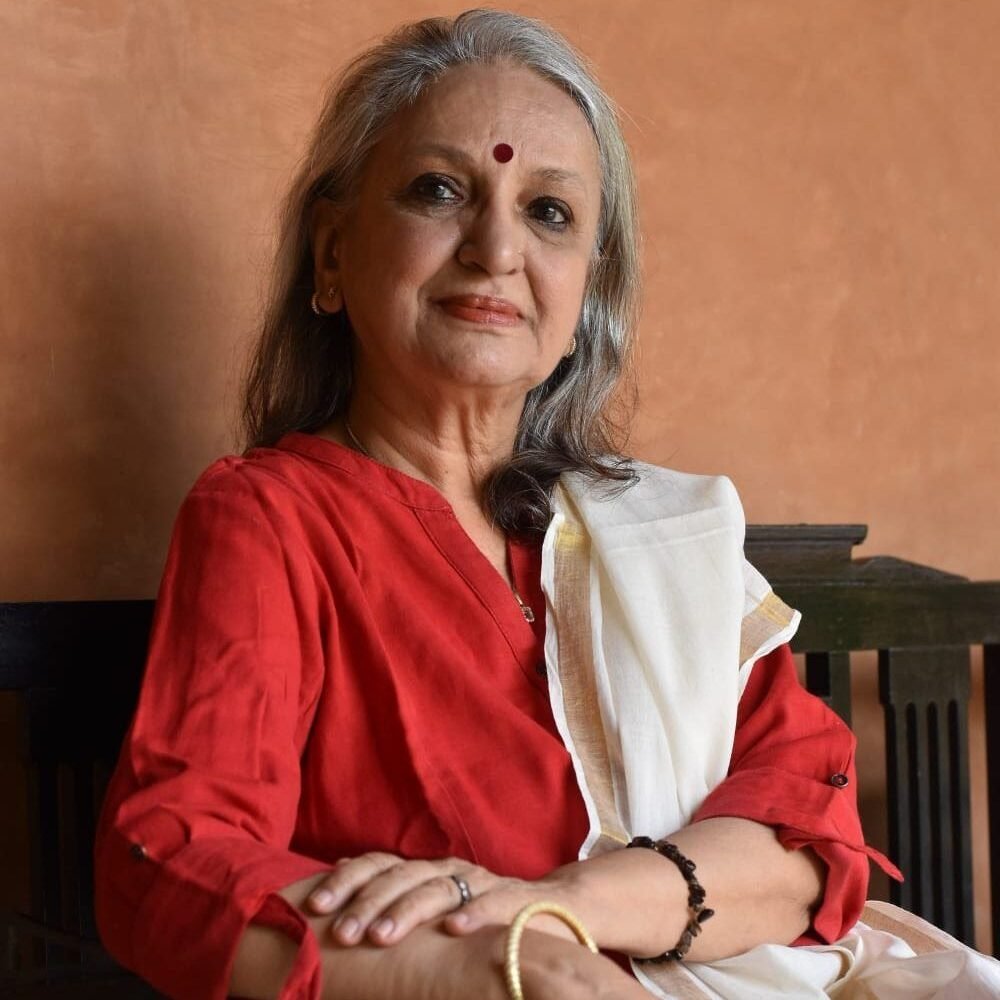
About Mala
Dr. Mala Kapadia is a highly accomplished scholar and practitioner with a distinguished career spanning research, education, journalism, human resources, and consulting. She is a passionate advocate for integrating ancient Indian wisdom with modern approaches to wellbeing, leadership, and organizational development. Dr. Kapadia is currently the Director of Centre for Indigenous Knowledge Systems, at the Anaadi Foundation and the Principal Investigator for a Ministry of Education (India) Indian Knowledge Systems Research Project on Wellbeing and Happiness based on Ayurveda. Mala is also a Guru participating in Grateful to Gurus, an initiative by Indica Academy, in which she inspire young minds in ancient wisdom. She is also a member of the Advisory Council of Centre for Indian Knowledge Systems at Chanakya University, Bengaluru, India.
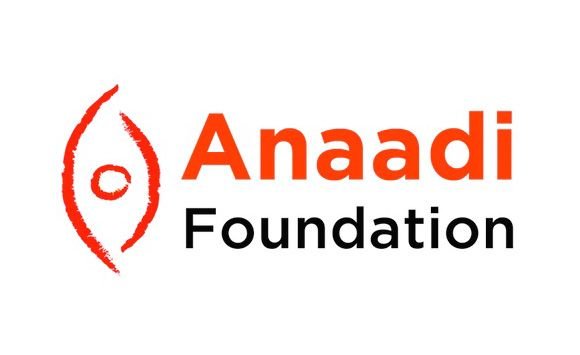
About the Anaadi Foundation
Anaadi Foundation is a spiritual organisation founded in 2015 and located near Palani in Tamil Nadu, India. With key focal areas on Education, Culture, Wellbeing and Sustainability, the Anaadi Foundation focuses on imparting Indian Knowledge Systems through various initiatives including Dharma Gurukulam, IKS-funded projects, publication of books, and training programs. The Anaadi Foundation provides various programs aimed at physical, emotional, and cognitive stability. These include the Mouna Sadhana program, which integrates asana, pranayama, dharana, dhyana, and Bhagavad Gita sessions. The foundation actively engages in sharing and preserving the depth of Indian culture, sciences, and values.
Want to know more about trauma and its impacts?
Watch the first virtual convening in our webinar series hosted by The Wellbeing Project and the Collective Change Lab. You can also visit our new hub for research and stories on intergenerational trauma. Together, we explore how we can move from trauma-informed to healing-centered ways of working for systemic change.



